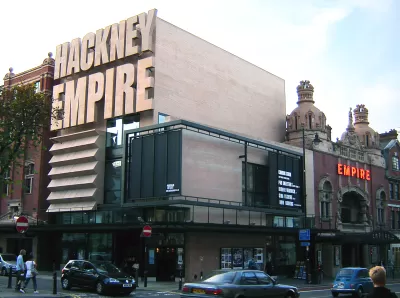From Motown to grunge, techno to hip hop, modern music came to life in garages, living rooms, churches, and warehouses. Urban design has been instrumental to what we listen to every day.

Journalist David Maraniss recently made the case for why single-family homes were crucial to the rise of Motown: every working-class family could own a piano. Here, Ian Wylie explores how urban design directly influenced some of the biggest trends in popular music.
On Seattle grunge Wylie writes, "Not only did that damp marine climate probably persuade bands to stay in their garages and practise more, but it's also fairly temperate, meaning the garages were warm enough to hang out in without needing to be heated separately – unlike, say, Minneapolis, where an unheated garage is a miserable place in winter."
Wylie documents why Berlin provided the perfect environment for electronic music to thrive. The city's abandoned warehouses, empty spaces, and disused bunkers provided ample room for dance parties and DJ experimentation. "Much of the recording of David Bowie's Berlin trilogy – Low, Heroes and Lodger – was completed at Hansa studios in the Kreuzberg district of west Berlin. From the control room, Bowie and his producer, Tony Visconti, could see over the Wall to the Red Guards in their gun turrets, who stared back through binoculars."
And in New York City, vibrant community centers gave rise to today's most widespread genre. "DJ Kool Herc, for example, held his first jams in the community centre of Sedgwick Avenue of the west Bronx. Afrika Bambaataa held his first parties in the Bronx River Community Center, jump-starting hip-hop in his section of the Bronx."
FULL STORY: From Berlin's warehouses to London's estates: how cities shape music scenes

Planetizen Federal Action Tracker
A weekly monitor of how Trump’s orders and actions are impacting planners and planning in America.

Congressman Proposes Bill to Rename DC Metro “Trump Train”
The Make Autorail Great Again Act would withhold federal funding to the system until the Washington Metropolitan Area Transit Authority (WMATA), rebrands as the Washington Metropolitan Authority for Greater Access (WMAGA).

The Simple Legislative Tool Transforming Vacant Downtowns
In California, Michigan and Georgia, an easy win is bringing dollars — and delight — back to city centers.

The States Losing Rural Delivery Rooms at an Alarming Pace
In some states, as few as 9% of rural hospitals still deliver babies. As a result, rising pre-term births, no adequate pre-term care and "harrowing" close calls are a growing reality.

The Small South Asian Republic Going all in on EVs
Thanks to one simple policy change less than five years ago, 65% of new cars in this Himalayan country are now electric.

DC Backpedals on Bike Lane Protection, Swaps Barriers for Paint
Citing aesthetic concerns, the city is removing the concrete barriers and flexposts that once separated Arizona Avenue cyclists from motor vehicles.
Urban Design for Planners 1: Software Tools
This six-course series explores essential urban design concepts using open source software and equips planners with the tools they need to participate fully in the urban design process.
Planning for Universal Design
Learn the tools for implementing Universal Design in planning regulations.
Smith Gee Studio
City of Charlotte
City of Camden Redevelopment Agency
City of Astoria
Transportation Research & Education Center (TREC) at Portland State University
US High Speed Rail Association
City of Camden Redevelopment Agency
Municipality of Princeton (NJ)



























